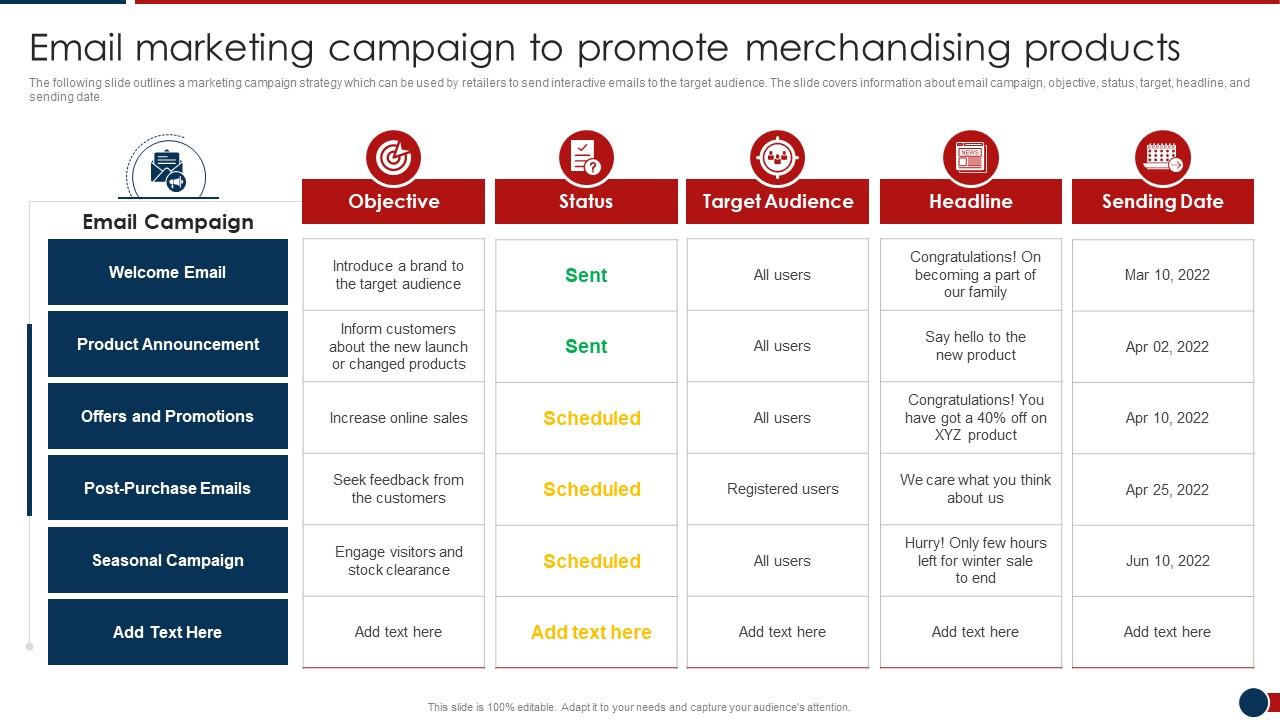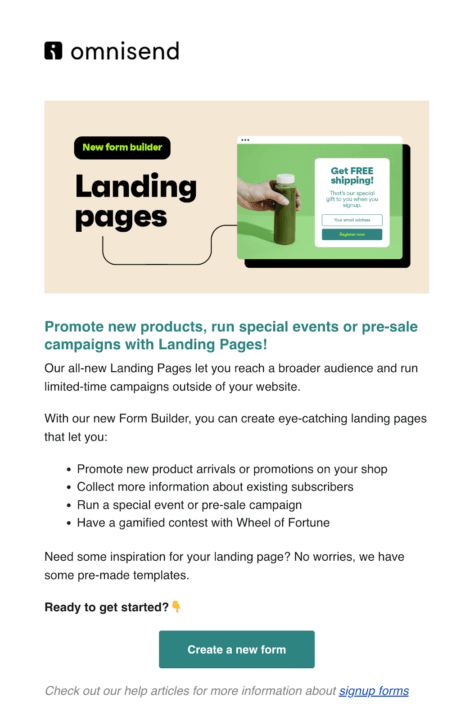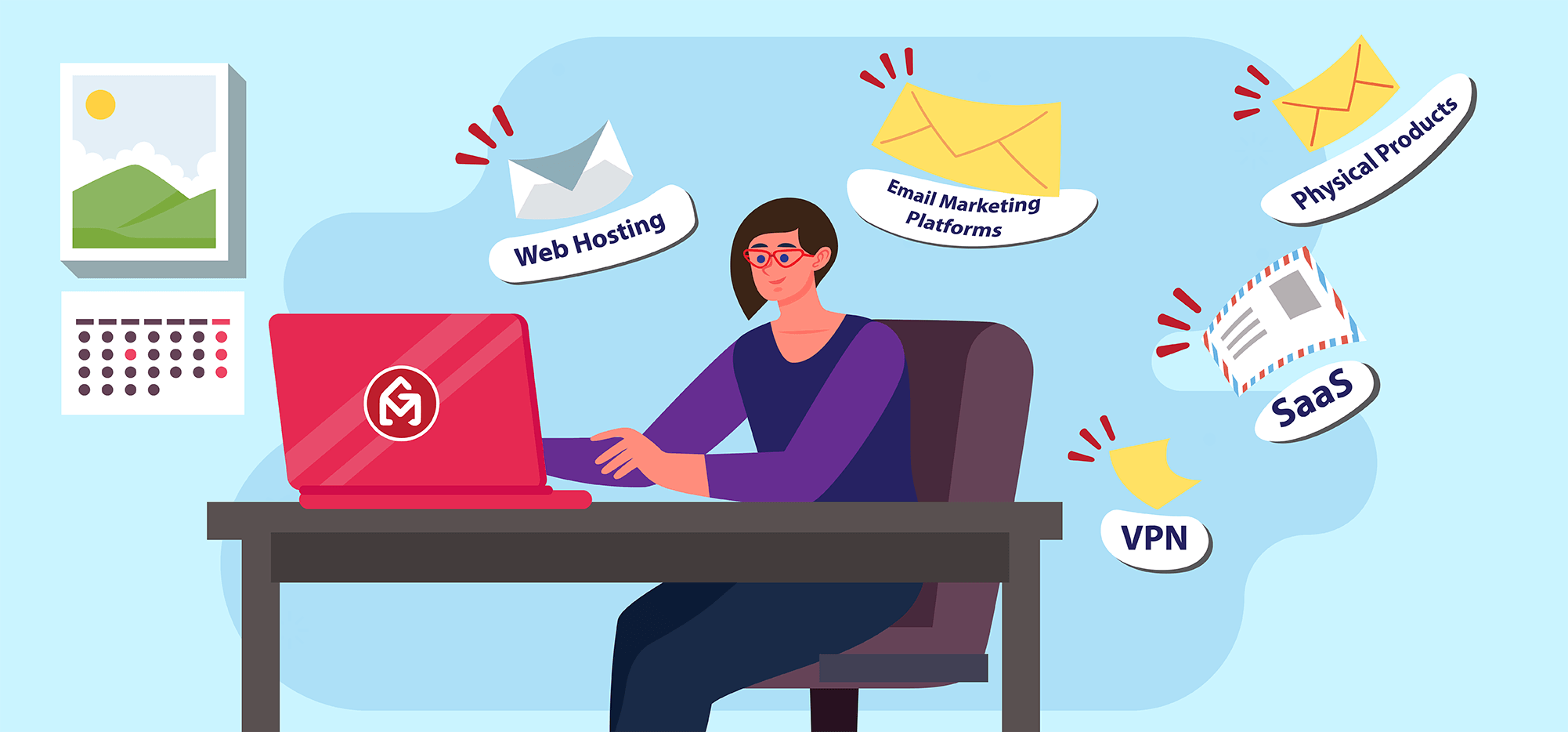Email marketing is a powerful tool for promoting products. It allows businesses to connect directly with their audience.
By sending targeted emails, you can boost sales and build customer loyalty. Email marketing stands out because it reaches people where they spend time: their inbox. Unlike social media, emails offer a personal touch. They can be customized to fit the interests and behaviors of your customers.
This makes them a perfect tool for promoting products. With effective email campaigns, you can inform your audience about new products, special offers, and more. The key is to create engaging content that captures attention. In this post, we will explore the best strategies to promote products using email marketing. Get ready to enhance your marketing efforts and see real results.

Credit: www.slideteam.net
Introduction To Email Marketing
Email marketing is a powerful tool for promoting products. It allows businesses to connect directly with their audience. This method helps build relationships and increase sales. Let’s dive into the basics of email marketing.
What Is Email Marketing?
Email marketing involves sending emails to a group of people. These emails may contain promotions, product updates, or important information. Businesses use email marketing to reach customers and prospects. It’s a direct way to communicate with your audience.
Importance Of Email Marketing
Email marketing is crucial for several reasons. It offers a high return on investment (ROI). Emails can drive traffic to your website. They can also encourage repeat purchases. Email marketing helps in building a loyal customer base.
Another key benefit is its cost-effectiveness. Compared to other marketing channels, email marketing is affordable. It allows businesses to reach many people with minimal expense. This makes it an ideal choice for small businesses.
Email marketing also provides valuable insights. You can track open rates, click-through rates, and conversion rates. This data helps in understanding customer behavior. It allows businesses to improve their marketing strategies.
In conclusion, email marketing is a vital tool. It helps in promoting products, building relationships, and driving sales. By using email marketing, businesses can achieve their goals effectively.
Building An Email List
Building an email list is essential for successful email marketing. It’s your direct line to potential customers. An email list allows you to promote products effectively. But how do you build one? Let’s explore some strategies.
Strategies To Grow Your List
Offer valuable content in exchange for email addresses. Create a compelling lead magnet. This could be a free eBook, a discount code, or a useful checklist. Ensure it aligns with your audience’s interests.
Use signup forms on your website. Place them strategically. Pop-ups, sidebar forms, and exit-intent pop-ups work well. Make the signup process simple and quick. Fewer fields mean more signups.
Promote your email list on social media. Share the benefits of joining your list. Use clear call-to-actions. Encourage your followers to subscribe. This way, you can convert social media followers into email subscribers.
Importance Of Segmentation
Segmentation is crucial in email marketing. It involves dividing your email list into smaller groups. These groups share similar characteristics. It could be demographics, purchase history, or engagement level.
Send targeted emails to each segment. This increases relevance and engagement. Personalized emails perform better. They have higher open and click-through rates.
Use segmentation to tailor your promotions. Different segments have different needs. Catering to these needs increases the chances of conversion. It makes your email marketing more effective.
Crafting Effective Emails
Creating effective emails is crucial in promoting your products. The right email can build trust, engage your audience, and increase sales. But how do you write an email that works? Focus on two key areas: subject lines and personalization.
Subject Lines That Work
Your subject line is the first thing your reader sees. It must grab attention immediately. Here are some tips:
- Keep it short: Aim for 5-7 words.
- Make it clear: Use simple language that is easy to understand.
- Add urgency: Phrases like “limited time” can create urgency.
- Ask a question: Questions can engage curiosity. Example: “Looking for the best deals?”
A good subject line can increase open rates. Make sure it is relevant to the content of your email.
Personalization Techniques
Personalization makes your emails more engaging. People like to feel special. Here are some ways to personalize your emails:
- Use their name: Start your email with the recipient’s name. Example: “Hi John,”
- Segment your audience: Divide your email list by interests. Send relevant content to each segment.
- Recommend products: Suggest items based on past purchases.
- Use dynamic content: Insert personalized offers and discounts.
Personalized emails can improve engagement and conversion rates. They show your customers you care about their needs.
Creating effective emails requires attention to detail. Focus on crafting strong subject lines and using personalization techniques. This will help you promote your products successfully.

Credit: www.omnisend.com
Designing Eye-catching Emails
Designing eye-catching emails is vital for promoting products effectively. These emails need to grab attention and encourage recipients to take action. Crafting such emails involves focusing on the visual appeal and ensuring they are mobile-friendly. Let’s delve into these aspects to create compelling emails.
Visual Appeal
Visual appeal is crucial in email marketing. Use high-quality images that relate to your product. Bright colors and engaging graphics draw the reader’s eye. Select fonts that are easy to read and match your brand’s style. Always keep the design clean and uncluttered. A well-organized layout helps the reader to focus on key information. Highlight important details using bold or different colors.
Mobile-friendly Design
Most people read emails on their phones. So, ensure your emails look great on mobile devices. Use a responsive design that adjusts to different screen sizes. Keep text short and paragraphs concise. Large buttons are easier to click on small screens. Test your emails on various devices before sending. This ensures a smooth experience for all recipients.
Creating Compelling Content
Creating compelling content is crucial for successful email marketing. Your content must engage readers and encourage them to take action. This section will explore content ideas and how to balance promotion with valuable information.
Content Ideas
Generating fresh content ideas can be challenging. Here are some suggestions to keep your emails engaging:
- Product Highlights: Showcase your products with detailed descriptions and images.
- Customer Testimonials: Share positive feedback from satisfied customers.
- How-To Guides: Provide step-by-step instructions for using your products.
- Exclusive Offers: Offer special discounts or promotions to your email subscribers.
- Behind-the-Scenes Content: Show the process of creating your products.
- Industry News: Share relevant news and trends in your industry.
Balancing Promotion And Value
Striking the right balance between promotion and value is essential. Here are some tips:
- 80/20 Rule: Dedicate 80% of your content to providing value, and 20% to promotion.
- Educational Content: Include informative articles, tips, and guides that interest your audience.
- Personal Stories: Share personal experiences that relate to your products.
- Interactive Content: Add surveys, quizzes, or polls to engage your readers.
- User-Generated Content: Encourage customers to share their experiences and feature them in your emails.
By following these strategies, you can create compelling content that promotes your products while providing value to your readers.
Automation And Scheduling
Email marketing is a powerful tool for promoting products. Automation and scheduling can make your campaigns even more effective. With the right setup, you can send emails at the best times without manual effort. This helps you reach more people and increase sales.
Setting Up Email Campaigns
First, choose an email marketing platform. Many options offer automation features. Create a series of emails for your campaign. Start with a welcome email. Follow up with product information and special offers. Use templates to save time and keep your emails looking professional. Personalize your emails with the recipient’s name and other details.
Timing For Maximum Impact
Timing is crucial for email marketing success. Test different times and days to see what works best. Many studies suggest mid-week mornings. This is when people are most likely to check their emails. Use your email platform’s scheduling features. Set your emails to go out at these optimal times. Monitor your open and click rates to refine your timing.
Analyzing Campaign Performance
Analyzing the performance of your email marketing campaigns is crucial. It helps you understand what works and what needs improvement. By tracking key metrics and refining future campaigns, you can boost your marketing efforts effectively.
Key Metrics To Track
To evaluate your email marketing campaign, focus on these key metrics:
- Open Rate: Measures the percentage of recipients who opened your email.
- Click-Through Rate (CTR): Indicates how many recipients clicked on the links within your email.
- Bounce Rate: Shows the percentage of emails that were not delivered to the recipient’s inbox.
- Conversion Rate: Tracks the percentage of recipients who completed a desired action after clicking on your email.
- Unsubscribe Rate: The percentage of recipients who opted out of your email list after receiving your email.
- Spam Complaints: The number of recipients who marked your email as spam.
Improving Future Campaigns
To enhance your future email marketing campaigns, consider these tips:
- Segment Your Audience: Divide your email list into smaller groups based on common characteristics. This allows you to send targeted and relevant emails.
- Personalize Content: Use the recipient’s name and tailor the content to their interests. Personalized emails often see higher engagement rates.
- A/B Testing: Test different elements of your email, such as subject lines, content, and call-to-action buttons. This helps you identify what resonates best with your audience.
- Optimize for Mobile: Ensure your emails are mobile-friendly. A significant percentage of emails are opened on mobile devices.
- Analyze Past Campaigns: Look at the performance of previous campaigns to understand what worked and what didn’t. Use this data to refine your future strategies.
- Clean Your Email List: Regularly remove inactive subscribers from your list. This improves your deliverability rates and ensures you’re targeting an engaged audience.
Compliance And Best Practices
Promoting products with email marketing demands strict adherence to compliance rules and best practices. Ensuring your email marketing strategy is compliant not only keeps you out of legal trouble but also builds trust with your audience. Let’s dive into essential compliance aspects and best practices to keep your email campaigns effective and lawful.
Following Gdpr And Can-spam
Understanding and following GDPR (General Data Protection Regulation) and CAN-SPAM (Controlling the Assault of Non-Solicited Pornography And Marketing) is crucial. These regulations protect consumer privacy and outline the rules for sending marketing emails.
| GDPR | CAN-SPAM |
|---|---|
| Applies to EU citizens | Applies to all US-based emails |
| Requires explicit consent | Requires clear opt-out instructions |
| Mandates data protection | Prohibits misleading subject lines |
To comply with GDPR, always obtain explicit consent from your audience. Explain how their data will be used. For CAN-SPAM compliance, provide a clear and easy way to opt out of future emails. Use accurate subject lines and include your physical address.
Maintaining A Clean List
A clean email list ensures higher engagement rates and reduces the risk of being marked as spam. Regularly update your list by removing inactive or invalid email addresses.
- Remove Hard Bounces: Emails that are permanently undeliverable should be deleted.
- Segment Your List: Group your audience based on interests and behaviors for targeted campaigns.
- Use Double Opt-In: Confirm subscriptions to ensure genuine interest.
Maintaining a clean list not only improves deliverability but also enhances the effectiveness of your campaigns. It helps in building a loyal customer base.
By following these guidelines, your email marketing campaigns will be compliant and efficient. Always prioritize your audience’s preferences and privacy. This approach will help in fostering trust and increasing engagement.
Case Studies And Success Stories
Email marketing is a powerful tool for promoting products. Many businesses have seen great success with it. In this section, we will explore case studies and success stories. These real-life examples show the effectiveness of email marketing. They provide insight and inspiration for your campaigns.
Successful Email Campaigns
One notable success story comes from a small online retailer. They used personalized emails to reach their customers. Each email included product recommendations based on past purchases. This approach led to a 20% increase in sales within three months. The retailer also saw higher engagement rates. Open rates increased by 15%, and click-through rates improved by 10%.
Another successful campaign was run by a subscription box company. They segmented their email list based on customer preferences. Each segment received tailored content and offers. The result was a significant boost in subscription renewals. The campaign also attracted new subscribers, growing their customer base by 25%.
Lessons Learned
These case studies offer valuable lessons. Personalization is key. Customers respond better to emails that feel unique to them. Including personalized product recommendations can drive sales. Segmentation also plays a crucial role. Tailoring content to different segments of your audience can improve engagement.
Another important lesson is the value of testing. A/B testing subject lines, content, and offers can lead to better results. It helps identify what resonates best with your audience. Consistency is also important. Regular, well-timed emails keep your brand top-of-mind for customers.
Finally, measuring success is vital. Track open rates, click-through rates, and conversions. Use this data to refine your strategies. Successful email campaigns are built on continuous improvement. By learning from these success stories, you can enhance your email marketing efforts.

Credit: www.gmass.co
Frequently Asked Questions
What Is Email Marketing?
Email marketing is promoting products or services through emails. It helps businesses reach their target audience directly and efficiently.
How Can Email Marketing Boost Sales?
Email marketing boosts sales by delivering personalized content to customers. It increases engagement, builds loyalty, and encourages repeat purchases.
What Are The Benefits Of Email Marketing?
Email marketing offers high ROI, personalized communication, and direct customer engagement. It also allows for detailed tracking and analytics.
How Do You Create Effective Email Campaigns?
Create effective email campaigns by segmenting your audience, personalizing content, and using compelling subject lines. Test and analyze results for improvement.
Conclusion
Email marketing can effectively promote your products. It reaches your audience directly. Craft clear, engaging emails. Personalize them for better connection. Track your results to improve strategies. Consistent effort leads to success. Remember, keep messages simple and relevant. Your customers will appreciate it.
Email marketing is a powerful tool. Use it wisely to grow your business. Happy emailing!

I am a passionate digital marketer with a strong expertise in SEO and article writing. With years of experience in crafting compelling content and optimizing it for search engines, I help businesses enhance their online visibility and drive organic traffic. Whether it’s creating engaging blog posts or implementing effective SEO strategies, I am dedicated to delivering results that make an impact.
